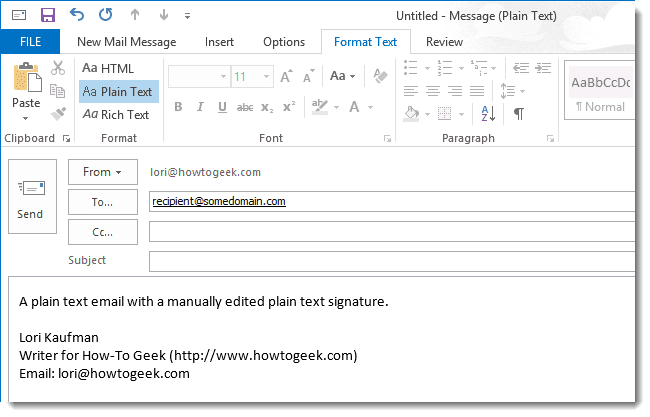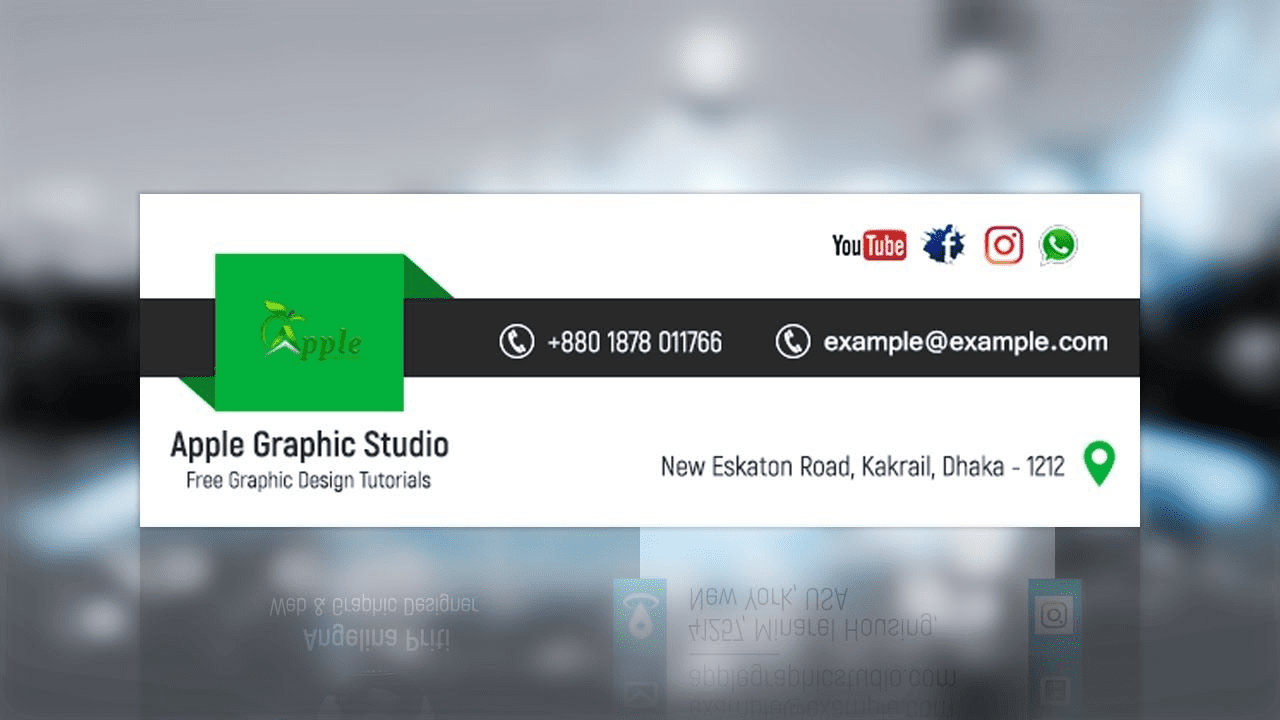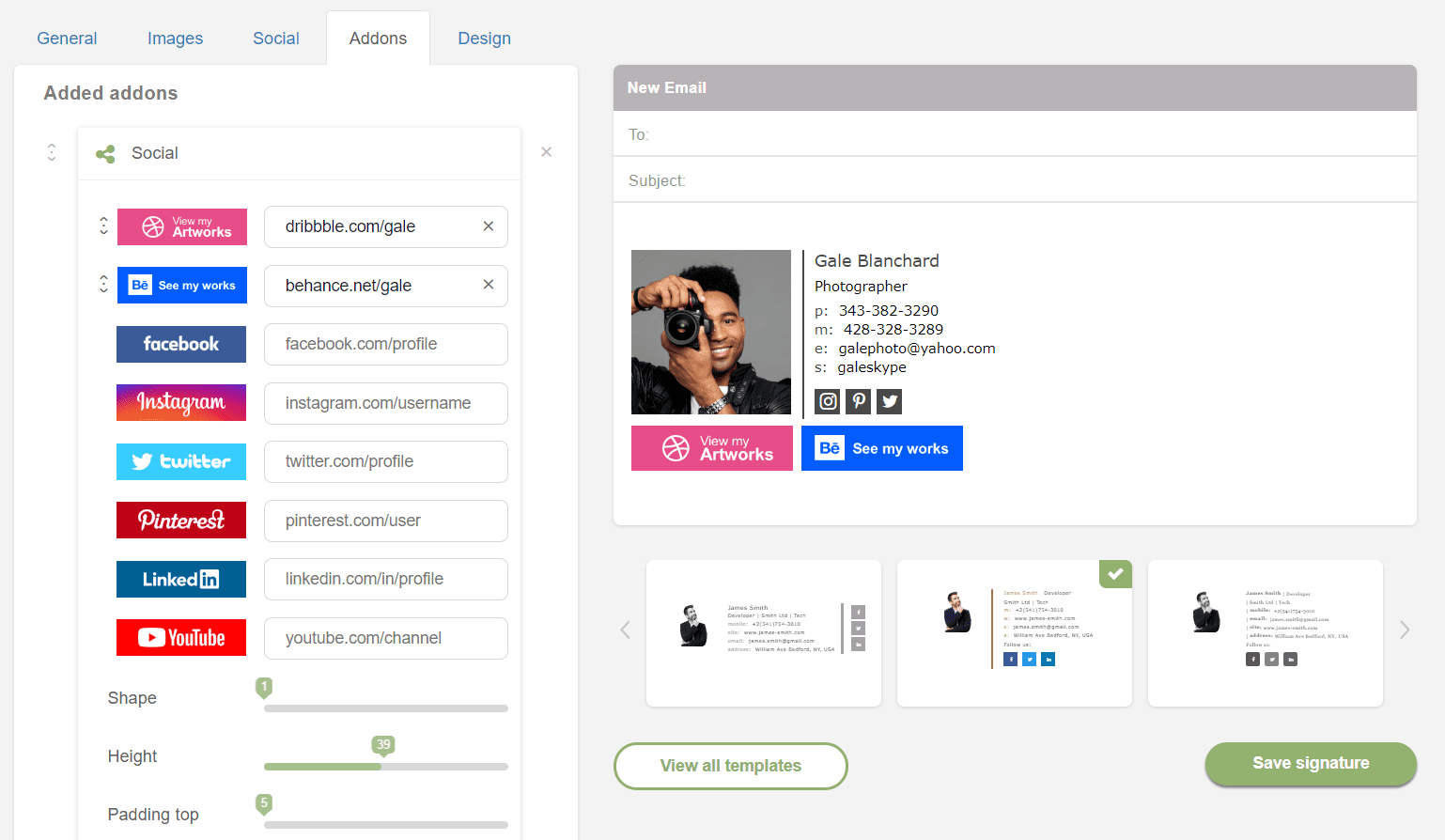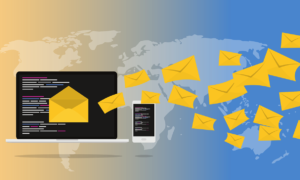A professional email signature is an excellent opportunity to brand every email you send. It can provide extra information for recipients about who you are and what you have to offer. A well-thought-out, properly designed signature can also help set a business-like tone and improve the level of loyalty and trust for the sender.
While such a professional sign-off is important, many people still make mistakes choosing the wrong tool to create one.
Check out the most common ways to create a signature, from simple text to an email signature generator, and find out which way is the easiest.
#1 Use text-only signatures
Creating a plain text email footer will mean you are limited in what you can do. You are missing the opportunity to add a photo, company logo, calls to action, interactive social media icons, and more. On top of that, this signature will never look as attractive as an HTML signature.

Source: Howtogeek.com
#2 Create an email signature in Microsoft Word
Many people choose to design a footer for emails with the help of Microsoft Word. You probably heard of Microsoft’s Word Rendering Engine for creating the HTML code. As long as you use the produced code in Microsoft products like Outlook, Word, and Excel, it looks the same. However, when it comes to other email clients like Gmail, Apple Mail, Thunderbird, etc., chances are recipients won’t see your signature as you intended. Instead, the signature will have extra spacing, gaps, wrong fonts, and so on.
#3 Use visual design tools
If you are a fan of Canva or similar tools, you probably know how tempting it is to create a modern, amazingly designed email signature with your favorite graphic design platform. While you might create a perfect signature, you will most likely face multiple issues. For example, images from emails often go to attachments. This means the signature won’t be displayed automatically. To see your signature, the reader must check the attachment and download your image. Even if the recipient can see your email footer, it won’t be interactive; (there is no option to click on your links, social icons, banner, etc.) because it is an image.
#4 Create a signature in Photoshop
There is a variety of tutorials on the Internet on how to design a great email signature in Photoshop. In case you are a Photoshop guru, this option is the very logical choice for you. However, just like with Canva, you might face visibility issues. Some email recipients won’t be able to see your signature due to their email client settings (because they disabled images in their email client). Such a Photoshop email signature might go to attachments. And emails with images and attachments have higher chances of being caught by spam filters.

Source: Pinterest.co.uk
#5 Write your own HTML code
Another common way of making an email footer is to code. It is a great option if you have enough resources like the ability to hire a developer, time for coding and testing (if you know how to code), and of course, money for all the things mentioned above.
But how does one create a signature without having to code?
#6 Use a dedicated email signature generator
It is possible to design great email footers with the help of email signature generators that will make your life easier because they usually have a convenient drag and drop interface. The best thing about these tools is that no coding or design skills are required. You can quickly and easily add all your contact details, headshot/company logo, social media icons, call to action buttons, and banners. In addition, you can choose from a wide range of professionally-designed templates and then customize them for your purpose if needed.

Source: Mysignature.io
When you are done with the signature design, you can easily export it to your email client. Most email generators create signatures compatible with dozens of the most popular email clients. So you don’t have to worry that the signature will appear properly on all devices and in all email clients.
It’s very convenient and, as you can see, there is no real reason you must learn how to code unless you want to do it for fun.
More benefits
The benefits are not over yet. Imagine you need to make 10 or even 100 signatures for all employees. If you ask them to do it on their own, most likely, nothing good will come of it. One of the biggest mistakes when creating signatures for teams is inconsistency across the company. That’s why we recommend you avoid letting employees use their own templates and tools to make signatures.
If you have developers who can create professional footers for everyone in the company, you need to understand that it’s not easy to manage and deploy email signatures to all employees’ emails every time you need to update something.
With a professional email signature generator, you need to set up a connection only once. Next time you need to make updates, you don’t have to ask anyone. You can do it all by yourself from one central location.

Source: Newoldstamp.com
Conclusion
An attractive, professionally-designed email footer is essential for building better relations with your audience, increasing people’s trust, and creating a positive image of you and your business.
Today, crafting a professional email signature isn’t a very difficult process. The most popular ways to create signatures are using a text editor, Canva, or Photoshop. Many also code themselves or hire freelance developers. However, if you want a signature that has such advantages as a photo, logo, clickable buttons, social links, banners and works perfectly in all email clients and devices, your best option would be using an email signature generator.
All you need to do is to input your contact details and upload images such as a company logo, headshots, and choose a template you like. After the software has created and saved your email footer, you can easily insert it in any email client. This will automatically add the signature to your emails.



































